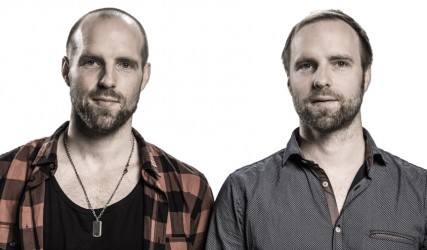
YOU’RE PERFECT, BUT MAYBE YOU DON’T WANT TO BE
If you had the possibility to make your children tall, well-muscled, intelligent or otherwise blessed with desirable traits, would you do it? If your parents had had the possibility to make you better-looking, a virtuoso pianist, or an incredibly smart businessman — and they didn’t do it — would you be angry at them? Or thank them for not doing it?
The increasing power and accessibility of genetic technology are giving parents the option of modifying their unborn children, creating designer babies. Inheritance has always been a game of chance. But with new genome editing techniques, chance has been removed. Nothing can go wrong. Right?
A SHOPPING LIST OF TRAITS
But just because you are designed to be perfect, you may not actually be perfect. Or if you are, you may not want to be.
Just ask Tony and Alex, the perfectly designed twins in TEST. Their mother, Mrs. Conrad, literally went shopping for their physical characteristics. The geneticist Dr. Cunningham assured her that, for a little extra cash, he could make her every wish come true. For good measure, Mr. Conrad threw in even more money for a “spare child” — thus twins.
But twins, as we know, can end up being quite different from one another, despite the fact they share the exact same DNA. They are replicas of each other physically. They are the same. But different.
In TEST, Tony relishes being perfect. He doesn’t question how his good looks and intelligence enabled him to get ahead in life — “never going too deep, never daring to leap,” as he sings in TEST.
So while Tony loves the perfection he was designed for, his twin brother Alex shrinks from the perfection. It is a burden he does not carry easily. Emotions are better left unstated. He prefers to keep a lid on his perfection and suffer in silence.
HARD CHOICES
Life, it seems, is full of tough choices. Apple or Android? Safari or Chrome? Organic or not? But more hard choices are on the way as we start to design our offspring: blue eyes or green? Large nose or small? Perfect or not? Science will give you options to design your children. Are you willing to make these difficult choices? Or do you want to leave it up to the game of chance, the way it has always been done?
HOW THE SCIENCE WORKS
DNA provides the blueprint that makes us who we are. It codes our genome, the 20,000 or so genes which produce proteins, which in different combinations allow cells to carry out their functions — a heart cell has different genes turned on than a brain cell, so they act differently.
Scientists have for years been able to change the way these genes are turned off and on and thereby change the properties of cells, which is useful in finding out what individual genes do. Genome editing techniques use “molecular scissors” to cut DNA to remove a gene and provide a template to introduce a new gene when the repair mechanisms of the cell try to correct the cut.
One of the genome editing techniques is called the CRISPR-Cas9 system, which has soared in popularity since 2012. Its ease of use means it is possible to apply it to humans. For example, embryos can be modified so that a family’s genetic diseases are not inherited. And parents could design their babies to make sure they have children with blue, rather than brown eyes, or even certain athletic abilities, or certain mental faculties. They could even design their children to be perfect.


